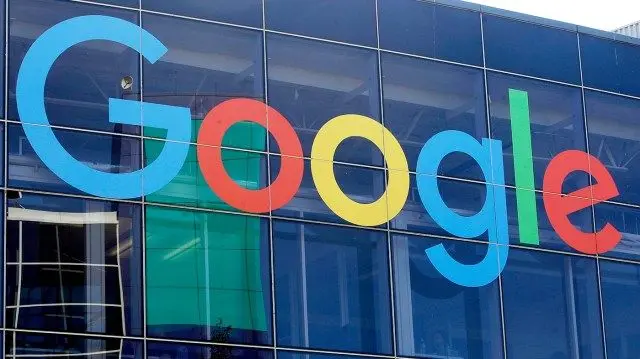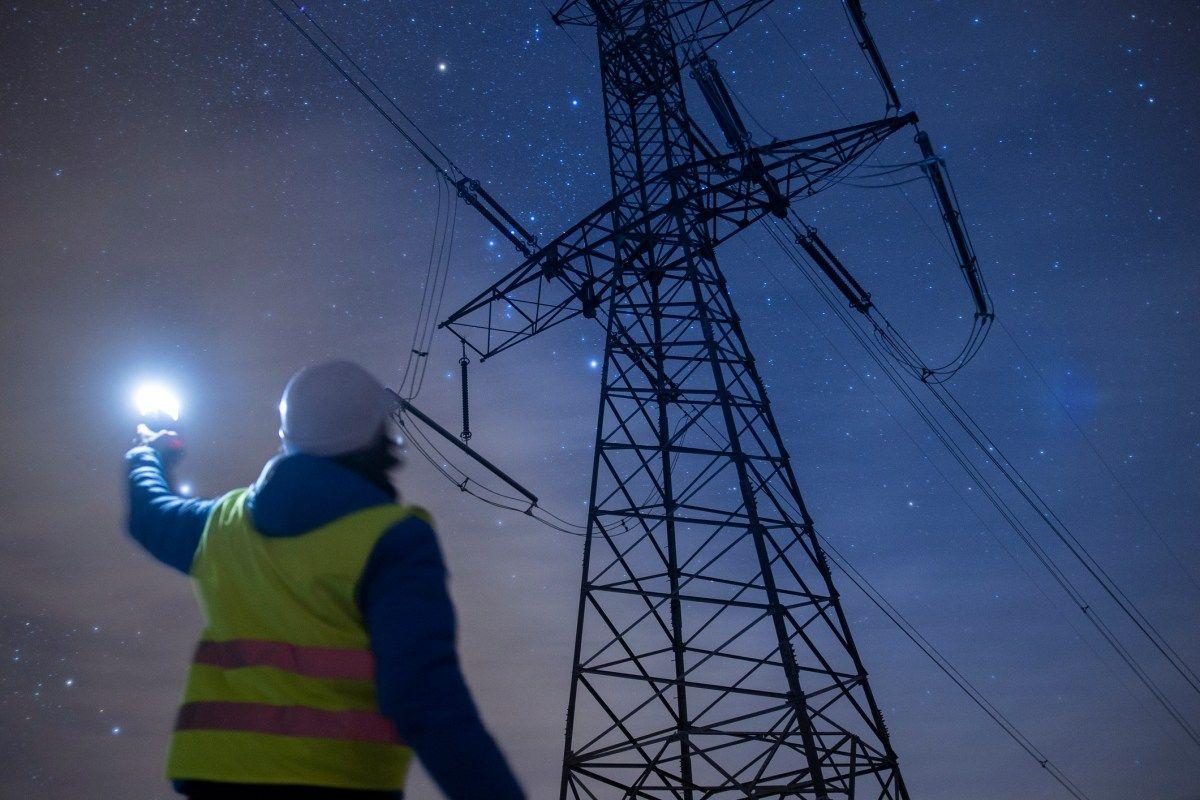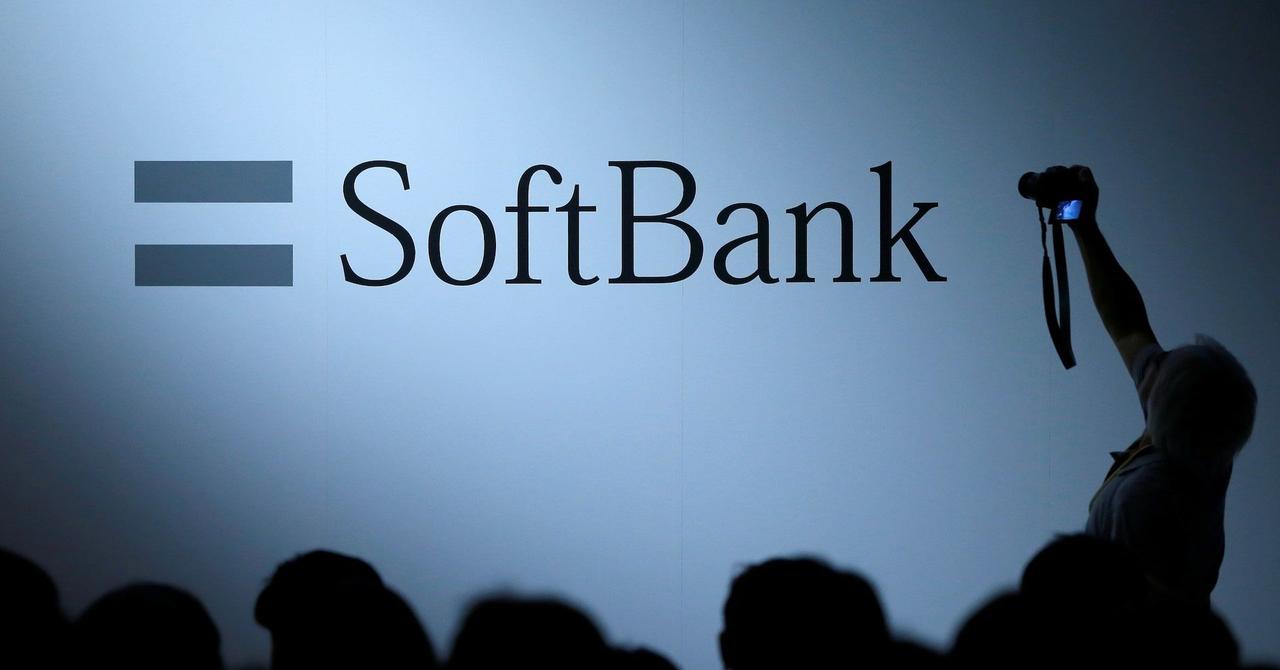Google Agrees to Pause AI Workloads During Power Demand Spikes
12 Sources
12 Sources
[1]
Google agrees to pause AI workloads when power demand spikes
On hot summer days, air conditioning is rather more important than search summaries Google will pause non-essential AI workloads to protect power grids, the advertising giant announced on Monday. The web giant already does this sort of thing for non-essential workloads like processing YouTube vids, which it moves to datacenters where power is available rather than continuing to run them in places demand for energy strains the grid. Under an agreement with Indiana Michigan Power (I&M) and the Tennessee Valley Authority (TVA), Google will use the same techniques for AI workloads. The announcement comes as states served by the power companies brace for a heat wave that will likely strain the grid as residents use air conditioners and increase demand for energy. Amid debate about datacenters' consumption of power and water, the last thing that the Chocolate Factory needs is folks blaming its AI Mode search function for a power outage when temperatures top 100°F (37.7°C). Under the agreement, if energy demand surges or there's a disruption in the grid due to extreme weather, I&M and TVA can now request that Google reduce its power use by rescheduling workloads or limiting non-urgent tasks until the issue is resolved. By dynamically adjusting how much power its bit barns are allowed to consume, a process Google calls "demand response", the web giant argues that new datacenters can be interconnected more quickly -- presumably because utilities are less concerned about them causing brown outs or outages. "By including load flexibility in our overall energy plan, we can manage AI-driven growth even where power generation and transmission are constrained," Google wrote in a blog post on Monday. Training and running AI models can easily consume tens or even hundreds of megawatts of power for hours, days, or weeks at a time, depending on how big or complex they are. However certain workloads don't need to run 24/7. Advancements in checkpointing mean that a model could be trained exclusively at night when grid capacity is at its greatest. Datacenter demand-response is still a nascent technology and is only being employed at a handful of Google bit barns. Further complicating the matter, the approach is also incompatible with certain high-demand workloads, such as Search, Maps, or its cloud business, Google notes. Google may have the ability to spin down its own machine learning workloads as it pleases, but it can't exactly pause its cloud customers' AI jobs without causing a few headaches. Demand-response isn't the only way Google is looking to curb the power demands of its AI infrastructure build out, and it's not hard to see why. The search giant plowed $14 billion into servers in just 91 days of its 2025 fiscal year with plans to spend upwards of $85 billion by year's end. The company also continues to invest in alternative energy sources, including geothermal, solar, wind, hydroelectric, and nuclear. Google aims to field small modular reactors just as soon as they get their hands on one, and in May signed an agreement with Elementl Power to support the development of three potential reactor sites in the US. ®
[2]
Google agrees to curb power use for AI data centers to ease strain on US grid when demand surges
NEW YORK, August 4 (Reuters) - Google (GOOGL.O), opens new tab has signed agreements with two U.S. electric utilities to reduce its AI data center power consumption during times of surging demand on the grid, the company said on Monday, as energy-intensive AI use outpaces power supplies. Utilities in the country have been inundated with requests for electricity for Big Tech's AI data centers, with demand eclipsing total available power supplies in some areas. That power crunch has led to concerns about spiking bills for everyday homes and business and blackouts. It has also complicated the technology industry's expansion of AI, which requires massive amounts of electricity - fast. Google's agreements with Indiana Michigan Power and Tennessee Power Authority would involve scaling back power use at the technology giant's data centers when called upon by the electric utilities to free up space on the grid. They are the first formal agreements by Google in demand-response programs with utilities to temporarily curtail its machine learning workloads, a subset of artificial intelligence. "It allows large electricity loads like data centers to be interconnected more quickly, helps reduce the need to build new transmission and power plants, and helps grid operators more effectively and efficiently manage power grids," Google said in a blog post. Demand-response programs have typically been used by other energy-intensive industries like heavy manufacturing or cryptocurrency mining. In exchange, the businesses generally receive payments or reduced power bills. The programs involving AI activity in data centers is generally new, and details of the commercial arrangements between Google and the utilities were not clear. While demand-response agreements apply only to a small portion of demand on the grid, the arrangements might become more common as U.S. electricity supply tightens. Reporting by Laila Kearney Editing by Bernadette Baum Our Standards: The Thomson Reuters Trust Principles., opens new tab
[3]
Google says it will switch off energy-heavy AI usage at critical points if needed
Google says it plans to pause data centre usage at key timesData centres use huge amounts of energy, straining the gridGlobal energy demand is surging as AI is widely adopted It's no secret that AI and data centres are consuming energy (and water) at an alarming rate, and it has become apparent the current levels of consumption are far above what most energy grids can feasibly support long term, a problem which will only escalate as more organisations deploy AI in the day-to-day. This unfortunate truth isn't lost on tech giants, who are now scrambling to try and mitigate the heavy sustainability burdens increased AI development has left them with - and Google has now announced it will start shifting or reducing power demand during 'certain hours or times of the year'. This 'demand response' means data centers are interconnected more quickly, and the need to build new transmission and power plants is lessened - helping grid operators manage power grids more efficiently and effectively. A summer of intense heatwaves and extreme weather conditions has seen a high demand for energy as air conditioning units are becoming a necessity. AI is not yet a necessity for the vast majority of uses, so Google has agreed to pause or reschedule non-urgent tasks until the demand surge is over. Partnering with the Indiana Michigan Power (I&M) and the Tennessee Valley Authority, the new agreement will push Google closer to its 24/7 carbon-free energy ambition, helping to 'bridge the gap between short-term load growth and long-term clean energy solutions,' and delivering immediate benefits. "As we add new large loads to our system, it is critical that we partner with our customers to effectively manage the generation and transmission resources necessary to serve them," said Steve Baker, president and chief operating officer of I&M. "Google's ability to leverage load flexibility as part of the strategy to serve their load will be a highly valuable tool to meet their future energy needs."
[4]
Google cuts back on power usage for some AI data centers
Google is scaling back its energy usage for some data centers that power its AI to help soften the strain AI has placed on the U.S. power grid. The company on Monday announced new energy-cutting agreements with Indiana Michigan Power and Tennessee Valley Authority through which Google will cut its energy usage during certain times of the day or year, a method called demand response. This is the first time Google is cutting back its energy usage for its AI workload, the company said in a release. Google said this energy-saving method allows "large electricity loads like data centers to be interconnected more quickly, helps reduce the need to build new transmission and power plants, and helps grid operators more effectively and efficiently manage power grids." The tech giant said these new agreements build on its demonstration with Omaha Public Power District, through which Google reduced its power usage for its AI during three grid events in 2024. "As we add new large loads to our system, it is critical that we partner with our customers to effectively manage the generation and transmission resources necessary to serve them," I&M president and COO Steve Baker said in the release. Google said using demand response (or "flexible demand," as the company called it) helps its long-term goal of becoming carbon-free because it helps "bridge the gap" between immediate energy load growth and clean-energy solutions that will take longer to implement. Last month, Google announced it is spending more than $3 billion in a deal to use hydropower for its data centers. Google's new agreements and investment in hydropower come months after its 2024 environmental report showed its carbon emissions have increased by 48% since 2019, in part due to the energy consumption by its data centers.
[5]
How we're making data centers more flexible to benefit power grids
Technologies like AI are poised to spur a new wave of innovation and economic growth -- and meeting AI's energy needs efficiently and reliably also presents a unique opportunity to modernize our entire energy system. That's why we've been working to bring flexible demand capabilities into our data center fleet, which enables us to shift or reduce power demand during certain hours or times of the year. These capabilities, often referred to as demand response, have several advantages, especially as we continue to see electricity growth in the US and elsewhere. It allows large electricity loads like data centers to be interconnected more quickly, helps reduce the need to build new transmission and power plants, and helps grid operators more effectively and efficiently manage power grids. We're pleased to report on our progress in the implementation of these capabilities, including two new utility agreements with Indiana Michigan Power (I&M) and Tennessee Valley Authority (TVA). These agreements represent the first time we're delivering data center demand response by targeting machine learning (ML) workloads. This builds on our successful demonstration with Omaha Public Power District (OPPD) where we reduced the power demand associated with ML workloads during three grid events last year -- paving the way for us to pursue opportunities at other locations. "I&M is excited to partner with Google to enable demand response capabilities at their new data center in Fort Wayne, IN. As we add new large loads to our system, it is critical that we partner with our customers to effectively manage the generation and transmission resources necessary to serve them. Google's ability to leverage load flexibility as part of the strategy to serve their load will be a highly valuable tool to meet their future energy needs," said Steve Baker, president and chief operating officer of I&M. Advancing Google's 24/7 carbon-free energy ambition requires a holistic approach, to both procure clean energy and support the grid through demand-side solutions. Flexible demand is an important piece of this portfolio -- it can be deployed quickly, helping bridge the gap between short-term load growth and long-term clean energy solutions, and delivers immediate benefits. The first data center demand response capabilities we developed involve shifting non-urgent compute tasks -- like processing a YouTube video -- during specific periods when the grid is strained. Through our ongoing partnerships with Centrica Energy and transmission system operator Elia in Belgium, and Taiwan Power Company in Taiwan, we've leveraged this capability to help grid operators maintain reliability during those periods of the year when demand is the highest. As AI adoption accelerates, we see a significant opportunity to expand our demand response toolkit, develop capabilities specifically for ML workloads, and leverage them to manage large new energy loads. By including load flexibility in our overall energy plan, we can manage AI-driven growth even where power generation and transmission are constrained. We believe this is a promising tool for managing large new energy loads and facilitating investment and growth.
[6]
Google strikes agreements with 2 grid operators to restructure data center demand
Google announced Monday that it has struck agreements with two regional grid operators to reduce its data center demand at times when the grid is under more strain. The tech giant unveiled agreements with Indiana Michigan Power and the Tennessee Valley Authority to shift certain workloads to limit the stress on the grid in a process known as demand response. "As AI growth accelerates, we recognize the need to expand our demand response toolkit and develop capabilities specifically for machine learning workloads," Amanda Peterson Corio, Google's global head of data center energy, said in a statement. "We want to be thoughtful about how we can continue to be a good grid citizen and see this as a vital tool for enabling responsible data center growth," she added. Google first launched efforts to use demand response in 2023. However, it said Monday that its latest agreements represent "the first time we're delivering data center demand response by targeting machine learning (ML) workloads." Machine learning is a subset of AI. Energy has increasingly become one of the most important factors in the race to develop AI. The technology requires vast amounts of energy to both train and interface with users. An Energy Department report released last month warned that blackout risks could increase 100 times by the end of the decade due to growing strain on the grid from AI development and efforts to reshore manufacturing. These concerns about growing energy demand were reflected in President Trump's AI Action Plan last month, in which he called fast-tracking both data center and energy construction.
[7]
Google agrees to curb power use for AI data centers to ease strain on US grid - The Economic Times
Utilities in the country have been inundated with requests for electricity for Big Tech's AI data centers, with demand eclipsing total available power supplies in some areas. Google's agreements with Indiana Michigan Power and Tennessee Power Authority would involve scaling back power use at the technology giant's data centers.Google has signed agreements with two US electric utilities to reduce its AI data center power consumption during times of surging demand on the grid, the company said on Monday, as energy-intensive AI use outpaces power supplies. Utilities in the country have been inundated with requests for electricity for Big Tech's AI data centers, with demand eclipsing total available power supplies in some areas. That power crunch has led to concerns about spiking bills for everyday homes and business and blackouts. It has also complicated the technology industry's expansion of AI, which requires massive amounts of electricity - fast. Google's agreements with Indiana Michigan Power and Tennessee Power Authority would involve scaling back power use at the technology giant's data centers when called upon by the electric utilities to free up space on the grid. They are the first formal agreements by Google in demand-response programs with utilities to temporarily curtail its machine learning workloads, a subset of artificial intelligence. "It allows large electricity loads like data centers to be interconnected more quickly, helps reduce the need to build new transmission and power plants, and helps grid operators more effectively and efficiently manage power grids," Google said in a blog post. Demand-response programs have typically been used by other energy-intensive industries like heavy manufacturing or cryptocurrency mining. In exchange, the businesses generally receive payments or reduced power bills. The programs involving AI activity in data centers is generally new, and details of the commercial arrangements between Google and the utilities were not clear. While demand-response agreements apply only to a small portion of demand on the grid, the arrangements might become more common as US electricity supply tightens.
[8]
Google Taps Into Power Grid Flexibility As AI Energy Demand Surges, Strikes Data Center Deals - Constellation Energy (NASDAQ:CEG), Amazon.com (NASDAQ:AMZN)
As AI's insatiable appetite for energy pushes the U.S. power grid to its limits, Alphabet Inc.'s GOOG GOOGL Google is partnering with regional grid operators to scale back data center loads during peak demand. Trending Investment OpportunitiesAdvertisementArrivedBuy shares of homes and vacation rentals for as little as $100. Get StartedWiserAdvisorGet matched with a trusted, local financial advisor for free.Get StartedPoint.comTap into your home's equity to consolidate debt or fund a renovation.Get StartedRobinhoodMove your 401k to Robinhood and get a 3% match on deposits.Get StartedGoogle Launches Demand Response For Machine Learning Workloads On Monday, Google announced agreements with Indiana Michigan Power and the Tennessee Valley Authority to implement "demand response" -- a strategy that shifts certain workloads away from times of grid strain, reported The Hill. While Google first experimented with this approach in 2023, this marks the first time the company is targeting energy-intensive machine learning workloads. "As AI growth accelerates, we recognize the need to expand our demand response toolkit and develop capabilities specifically for machine learning workloads," said Amanda Peterson Corio, Google's global head of data center energy. "We want to be thoughtful about how we can continue to be a good grid citizen and see this as a vital tool for enabling responsible data center growth." See Also: Elon Musk Loses $34 Billion As Tesla Sheds $153 Billion Amid Feud With Trump -- Here's How The Billionaire's Fortune Has Fared So Far In 2025 AI Is Reshaping The Energy Market -- And Raising Red Flags Energy use has become a defining issue in the AI arms race. According to a July U.S. Department of Energy report, blackout risks could increase 100-fold by 2030 due to AI and manufacturing demand, the report said. In response, President Donald Trump's AI Action Plan calls for accelerating the construction of both energy infrastructure and data centers. Goldman Sachs estimates global data center electricity demand will jump 165% by 2030, potentially making the sector one of the world's top 10 energy consumers. IPPs And Utility Stocks Surge On AI Power Demand With AI rapidly transforming the electricity landscape, independent power producers (IPPs) such as Constellation Energy CEG, Vistra VST and NRG Energy NRG are experiencing unprecedented growth. A June note from LPL Financial analyst Thomas Shipp highlighted how hyperscaler capex cycles -- like those from Google Cloud, Amazon.com, Inc. AMZN web services and Microsoft Corporation's MSFT Azure -- are driving M&A activity in the energy sector. Price Action: Alphabet Inc.'s Class A shares edged down 0.23% to $194.60 in after-hours trading, while Class C shares also declined 0.23% to $195.30, according to Benzinga Pro. Benzinga's Edge Stock Rankings indicate that GOOGL maintains strong upward momentum across short, medium and long-term periods. Additional performance metrics are available here. Read Next: Apple May See Fewer Searches In Safari, But Google CEO Sundar Pichai Insists AI Is Fueling Overall Query Growth: 'Far From A Zero-Sum Game' Photo Courtesy: JHVEPhoto on Shutterstock.com Disclaimer: This content was partially produced with the help of AI tools and was reviewed and published by Benzinga editors. AMZNAmazon.com Inc$212.36-1.11%Stock Score Locked: Edge Members Only Benzinga Rankings give you vital metrics on any stock - anytime. Unlock RankingsEdge RankingsMomentum64.43Growth97.50Quality67.87Value51.87Price TrendShortMediumLongOverviewCEGConstellation Energy Corp$358.385.17%GOOGAlphabet Inc$195.302.82%GOOGLAlphabet Inc$194.602.89%MSFTMicrosoft Corp$537.292.51%NRGNRG Energy Inc$174.574.14%VSTVistra Corp$215.503.58%Market News and Data brought to you by Benzinga APIs
[9]
Google to Curb AI Data Center Power Use During Peak Demand
As artificial intelligence workloads surge and strain electric grids across the United States, Google has stepped forward with a novel solution, entering into agreements with Indiana Michigan Power and the Tennessee Valley Authority to flexibly reduce its AI data center power usage during peak demand periods. This initiative introduces "demand response" specifically tailored for AI infrastructures, enabling Google to scale back non-essential machine learning operations when electricity grids are most taxed. Google's Head of Advanced Energy, Michael Terrell, emphasizes that such flexibility not only helps defer the need for building additional power plants but also improves utility system stability and responsiveness.
[10]
Google's AI Data Centres Drain the US of Its Power Supply
Google faced a shortage of electricity due to its energy-intensive AI data centres. This incident hints at how using advanced technologies can be resource-intensive. With the systems faltering when AI is just at its initial stages of development, future innovations in the sector might face potential issues related to power supply shortages. As of now, Google has announced minimizing its machine learning workload for electric utilities to manage and distribute the power efficiently. The tech giant said that "This move enables large electricity loads like data centres to be interconnected with grids more quickly whilst reducing the need to build new transmission and power plants." Google signed this agreement as part of "demand response programs" that are intended to negotiate energy supplies with companies that consume a lot of power. It helps authorities in the US manage the stress on in exchange for changing companies with lower electricity bills. Demand response programmes are more commonly used by heavy manufacturers and cryptocurrency mining companies. However, the growing demand for energy to power the AI data centres has created the need for new programs. The commercial discussions between Google and utilities are not yet clearly understood. Also Read: With new advancements happening at a quick pace, major issues about power supply shortage in the near future are quite evident. The exemption offered now might come to a halt, and electricity bills can become very expensive. Nevertheless, like these can lower the stress on power grids and keep the power supply steady.
[11]
Google agrees to curb power use for AI data centres to ease strain on U.S. grid when demand surges
NEW YORK -- Google has signed agreements with two U.S. electric utilities to reduce its AI data centre power consumption during times of surging demand on the grid, the company said on Monday, as energy-intensive AI use outpaces power supplies. Utilities in the country have been inundated with requests for electricity for Big Tech's AI data centres, with demand eclipsing total available power supplies in some areas. That power crunch has led to concerns about spiking bills for everyday homes and business and blackouts. It has also complicated the technology industry's expansion of AI, which requires massive amounts of electricity - fast. Google's agreements with Indiana Michigan Power and Tennessee Power Authority would involve scaling back power use at the technology giant's data centres when called upon by the electric utilities to free up space on the grid. They are the first formal agreements by Google in demand-response programs with utilities to temporarily curtail its machine learning workloads, a subset of artificial intelligence. "It allows large electricity loads like data centres to be interconnected more quickly, helps reduce the need to build new transmission and power plants, and helps grid operators more effectively and efficiently manage power grids," Google said in a blog post. Demand-response programs have typically been used by other energy-intensive industries like heavy manufacturing or cryptocurrency mining. In exchange, the businesses generally receive payments or reduced power bills. The programs involving AI activity in data centres is generally new, and details of the commercial arrangements between Google and the utilities were not clear. While demand-response agreements apply only to a small portion of demand on the grid, the arrangements might become more common as U.S. electricity supply tightens. ---
[12]
Google agrees to curb power use for AI data centers to ease strain on US grid when demand surges
NEW YORK, August 4 (Reuters) -Google has signed agreements with two U.S. electric utilities to reduce its AI data center power consumption during times of surging demand on the grid, the company said on Monday, as energy-intensive AI use outpaces power supplies. Utilities in the country have been inundated with requests for electricity for Big Tech's AI data centers, with demand eclipsing total available power supplies in some areas. That power crunch has led to concerns about spiking bills for everyday homes and business and blackouts. It has also complicated the technology industry's expansion of AI, which requires massive amounts of electricity - fast. Google's agreements with Indiana Michigan Power and Tennessee Power Authority would involve scaling back power use at the technology giant's data centers when called upon by the electric utilities to free up space on the grid. They are the first formal agreements by Google in demand-response programs with utilities to temporarily curtail its machine learning workloads, a subset of artificial intelligence. "It allows large electricity loads like data centers to be interconnected more quickly, helps reduce the need to build new transmission and power plants, and helps grid operators more effectively and efficiently manage power grids," Google said in a blog post. Demand-response programs have typically been used by other energy-intensive industries like heavy manufacturing or cryptocurrency mining. In exchange, the businesses generally receive payments or reduced power bills. The programs involving AI activity in data centers is generally new, and details of the commercial arrangements between Google and the utilities were not clear. While demand-response agreements apply only to a small portion of demand on the grid, the arrangements might become more common as U.S. electricity supply tightens. (Reporting by Laila KearneyEditing by Bernadette Baum)
Share
Share
Copy Link
Google has signed agreements with US electric utilities to reduce AI data center power consumption during times of high demand, helping to ease strain on the power grid and manage the energy-intensive growth of AI technology.
Google's New Power Management Strategy for AI Workloads
Google has announced a significant step in managing the energy consumption of its AI operations. The tech giant has agreed to pause non-essential AI workloads during times of high power demand, a move aimed at protecting power grids and ensuring stability during peak usage periods
1
.Agreements with Power Companies

Source: The Hill
Google has signed agreements with Indiana Michigan Power (I&M) and the Tennessee Valley Authority (TVA) to implement this new strategy
2
. These are the first formal agreements by Google to participate in demand-response programs specifically targeting machine learning workloads, a subset of artificial intelligence5
.The Demand Response Approach
Under these agreements, if energy demand surges or there's a disruption in the grid due to extreme weather, I&M and TVA can request that Google reduce its power use. This is achieved by rescheduling workloads or limiting non-urgent tasks until the issue is resolved
1
. This approach, which Google calls "demand response" or "flexible demand," allows for more efficient management of power grids and reduces the need for new transmission and power plants5
.Addressing AI's Growing Energy Demands

Source: Analytics Insight
The initiative comes at a crucial time as the energy demands of AI and data centers are rapidly increasing. Training and running AI models can consume tens or even hundreds of megawatts of power for extended periods
1
. This surge in energy consumption has led to concerns about potential spikes in energy bills for homes and businesses, as well as the risk of blackouts2
.Balancing AI Growth and Energy Management
Google's approach demonstrates a proactive stance in managing the energy demands of AI growth. By incorporating load flexibility into its overall energy plan, Google aims to manage AI-driven growth even in areas where power generation and transmission are constrained
5
. This strategy aligns with Google's long-term goal of becoming carbon-free, as it helps bridge the gap between immediate energy load growth and longer-term clean energy solutions4
.Related Stories
Implications for the Tech Industry

Source: The Register
Google's initiative could set a precedent for other tech companies grappling with the energy demands of AI. As AI adoption accelerates across industries, similar demand-response agreements might become more common
2
. This approach not only helps manage immediate energy needs but also supports the development of a more flexible and resilient power grid.Challenges and Limitations
While this approach shows promise, it's important to note that demand-response is still a nascent technology and is only being employed at a handful of Google's data centers. Moreover, it's incompatible with certain high-demand workloads such as Search, Maps, or Google's cloud business
1
. Balancing the needs of AI development with energy conservation will likely remain a significant challenge for the tech industry in the coming years.References
Summarized by
Navi
[1]
[2]
Related Stories
Google Partners with PJM to Deploy AI for Streamlining Electrical Grid Connections
11 Apr 2025•Technology

AI's Energy Appetite: Data Centers Struggle with Sustainability Amid AI Boom
13 Jul 2024

Google's $800M Clean Energy Initiative: Powering AI-Driven Data Centers with Renewable Sources
11 Dec 2024•Business and Economy

Recent Highlights
1
Meta acquires Manus for $2 billion, adding revenue-generating AI agents to its platforms
Business and Economy

2
Nvidia locks in $20 billion Groq deal, securing AI chip rival's technology and talent
Business and Economy

3
Geoffrey Hinton warns AI job replacement will accelerate in 2026 as systems gain new capabilities
Technology





